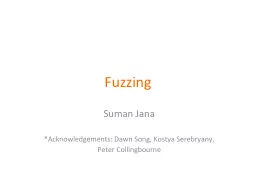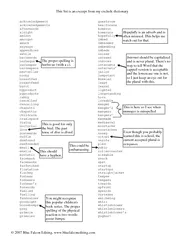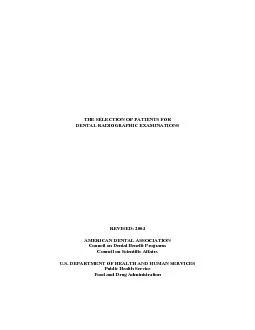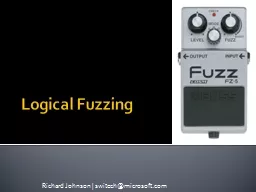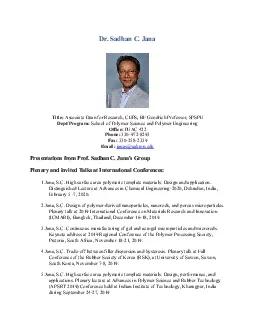PPT-Fuzzing Suman Jana *Acknowledgements:
Author : karlyn-bohler | Published Date : 2018-03-07
Dawn Song Kostya Serebryany Peter Collingbourne Techniques for bug finding Automatic test case generation Lower coverage Lower false positives Higher false
Presentation Embed Code
Download Presentation
Download Presentation The PPT/PDF document "Fuzzing Suman Jana *Acknowledgements:" is the property of its rightful owner. Permission is granted to download and print the materials on this website for personal, non-commercial use only, and to display it on your personal computer provided you do not modify the materials and that you retain all copyright notices contained in the materials. By downloading content from our website, you accept the terms of this agreement.
Fuzzing Suman Jana *Acknowledgements:: Transcript
Download Rules Of Document
"Fuzzing Suman Jana *Acknowledgements:"The content belongs to its owner. You may download and print it for personal use, without modification, and keep all copyright notices. By downloading, you agree to these terms.
Related Documents

